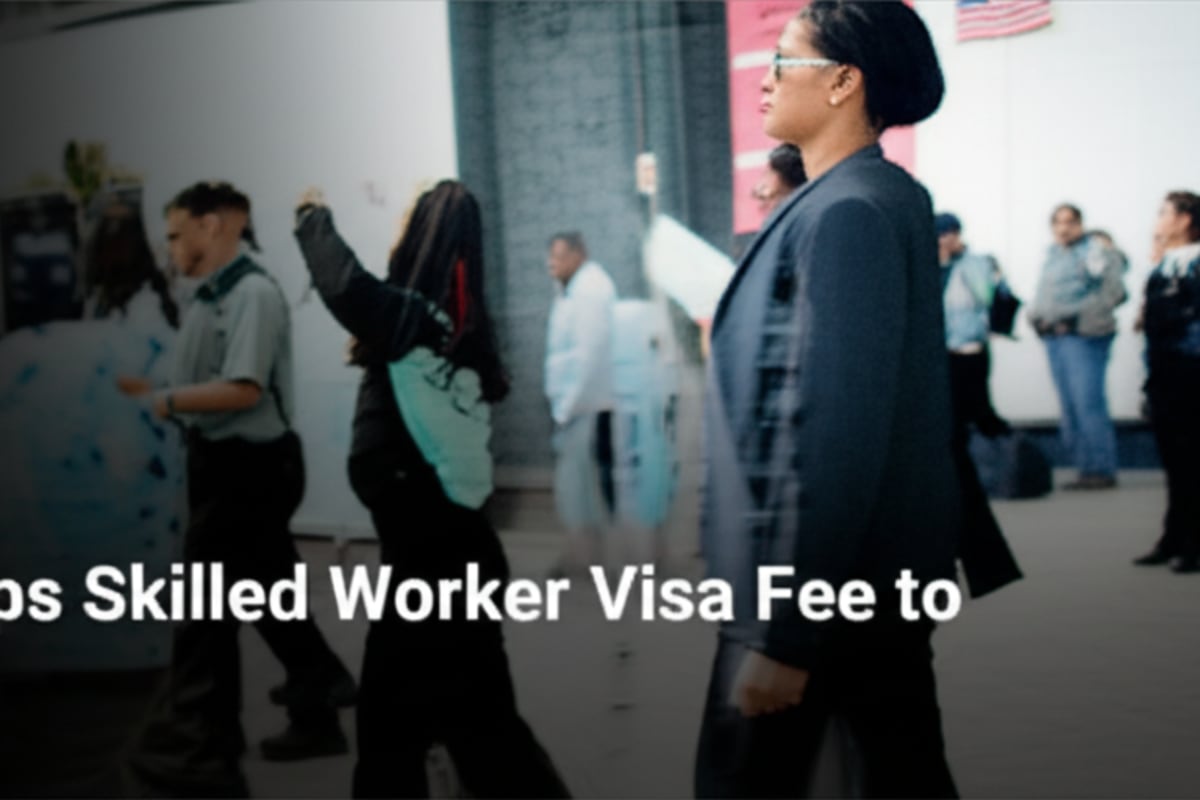Trump Ups Skilled Worker Visa Fee to $100,000

The Trump administration's recent announcement of a $100,000 fee for skilled worker visa applicants has sent shockwaves across the globe, particularly impacting Southeast Asia, a region with a burgeoning pool of highly skilled tech professionals
Background
The proposed fee, a significant increase from previous levels, is viewed by many as a protectionist measure that could stifle innovation and harm international collaborations
The statement, reportedly delivered by the US Commerce Secretary, urging companies to "Train Americans First," underscores a broader shift in US immigration policy, prioritizing domestic workforce development over the acquisition of foreign talent
The specifics of when and how this fee would be implemented are still under discussion, creating further uncertainty within the tech sector
Impact on Southeast Asian Tech Talent
This substantial increase in visa fees represents a significant barrier for individuals from Southeast Asian countries, many of whom possess advanced degrees in STEM fields and actively seek opportunities in the US tech sector
Countries like Vietnam, the Philippines, Singapore, and India have consistently seen a flow of skilled workers migrating to the US, contributing significantly to the American economy through innovation, research and development, and the creation of new businesses
This new policy risks disrupting this established talent pipeline, potentially hindering innovation and economic growth in both the US and Southeast Asia
The high cost could make it prohibitive for smaller companies and startups to sponsor foreign talent, limiting their ability to compete globally
Economic and Innovation Concerns
The rationale behind this policy shift centers on the belief that American workers should be given priority in filling high-skilled jobs.
The administration argues that this approach will incentivize businesses to invest more in training and development programs for domestic workers, addressing skill gaps within the US labor market
This focus on domestic workforce development is a key component of the administration's economic agenda, aiming to reduce reliance on foreign labor and boost domestic employment
However, critics argue that the $100,000 fee is excessively high and will disproportionately affect highly skilled individuals from developing nations, effectively pricing them out of the American market
They contend that this steep increase could inadvertently stifle innovation and economic growth in the US, as it limits access to a global talent pool of specialized expertise
Moreover, it could harm international relations, particularly with countries that have strong partnerships with the US in areas like technology and research
Concerns have been raised that this policy could push talented workers to seek opportunities in other countries, such as Canada, Australia, or European nations, further weakening the US's competitive edge
Southeast Asian Perspectives
For Southeast Asian nations, the impact of this policy could be multifaceted.
The immediate effect will likely be a reduction in the number of skilled workers migrating to the US
This could lead to a surplus of highly qualified individuals within Southeast Asia, potentially stimulating local innovation and entrepreneurship as these skilled workers seek opportunities closer to home
However, it could also hinder the career aspirations of many talented professionals who aspire to contribute to the global technology landscape and gain valuable international experience
Some analysts suggest that this policy could incentivize Southeast Asian governments to invest further in their own technology sectors, creating more attractive opportunities for their citizens
Long-Term Implications
The long-term implications remain uncertain. The effectiveness of the policy in boosting domestic training programs remains to be seen.
Without robust and well-funded training initiatives, the policy may simply result in unfilled high-skilled positions and a slowdown in technological advancement
Furthermore, the policy could exacerbate existing inequalities between developed and developing nations, limiting opportunities for those from less privileged backgrounds
There's also the risk of a "brain drain" from Southeast Asia, as skilled workers seek opportunities in countries with more welcoming immigration policies
A Balanced Approach
The situation requires a nuanced approach.
A balanced strategy would involve both incentivizing domestic training and maintaining access to the global talent pool
This could include targeted programs to support American workers transitioning into high-demand fields, coupled with a more moderate approach to visa fees that doesn't completely shut the door to highly skilled immigrants
Southeast Asian nations, meanwhile, may need to invest further in their own technological infrastructure and development to retain their highly skilled professionals and foster innovation within their own borders
Collaboration between the US and Southeast Asian countries could be crucial to addressing these challenges and ensuring a mutually beneficial outcome
Broader Implications
The $100,000 fee is not just a fiscal matter; it represents a shift in the US’s approach to global talent acquisition and its commitment to international collaboration
The long-term repercussions for both the US and Southeast Asia will depend on the interplay of various factors, including the effectiveness of domestic training programs, the adaptability of global companies, and the reaction from other nations with similar talent pools
The future of US-Southeast Asia relations, particularly in the technology sector, hinges on how these challenges are addressed
Key Insights:
- Significant increase in skilled worker visa fees will impact Southeast Asian tech talent.
- Policy aims to boost domestic training but may stifle US innovation and economic growth.
- Long-term effects uncertain; requires a balanced approach to domestic training and global talent acquisition.
Contextual Analysis:
This policy significantly impacts Southeast Asia, a region with a large pool of skilled workers seeking US opportunities.
The impact will vary across nations, potentially affecting economic growth and international relations
